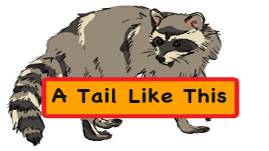Teachers' Domain - Digital Media for the Classroom and Professional Development
User: Preview


KET's Everyday Science is funded in part by Kentucky Power and the American Electric Power Foundation and PNC Bank.
Humans and animals share some common features. We use our eyes to see, our nose to smell and our ears to hear. Animals use those same features to help them survive by finding food and sense danger. A Tail Like This will help children learn more about the features of a few common animals they may see every day.
This resource is part of the KET Everyday Science collection.
As children begin to understand the structure of their own bodies, they learn how different parts of their bodies as well as their senses help them every day. With our eyes, we can look at the pictures in a book. Our ears help us hear voices and music. Our nose can smell a flower.
Animals have body parts that are similar to those of humans. In looking at the ways in which animals use these unique features to live and survive, children can begin to observe how their own physical attributes work to help them explore and understand the world around them.
The Teaching Tips will give you some ideas how to continue the conversation and expand on the content in the interactive.
Vocabulary
soft, sticky, rough, grainy, hard, smooth
Vocabulary
height, image, scale, trace, outline
 Loading Standards
Loading Standards Teachers' Domain is proud to be a Pathways portal to the National Science Digital Library.
Teachers' Domain is proud to be a Pathways portal to the National Science Digital Library.
